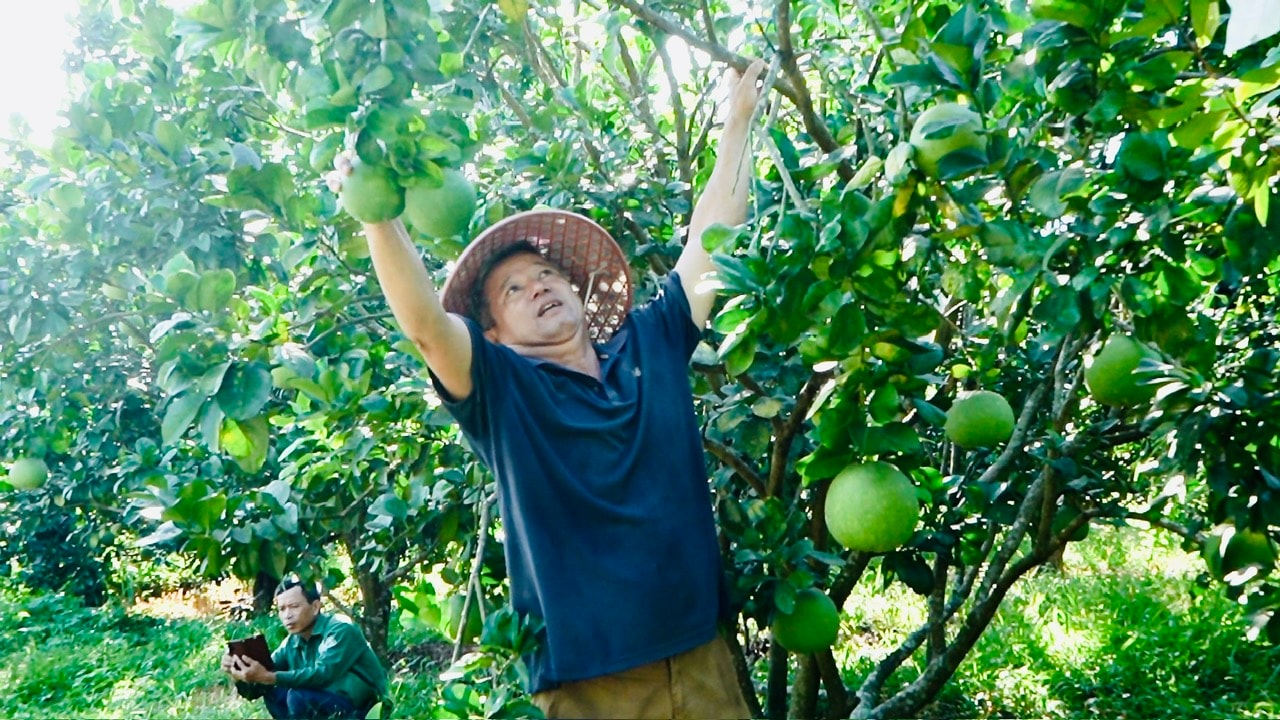
Sweet fruit by the river
In Binh Yen village (Que Phuoc commune), Mrs. Tran Thi Kim Phuong's garden of more than 1.5 hectares is entering the main harvest season. On that area, her family grows about 320 Dai Binh grapefruit trees, green-skin grapefruit intercropped with oranges, tangerines, and guavas, creating a green garden all year round.
Ms. Phuong said that this year’s grapefruit crop yield decreased, reaching only over 7,000 fruits, earning about 50 million VND. However, thanks to the good harvest of intercropped crops, the family’s total income remains stable.
“Previously, traders came to the garden to buy, but in recent years, my children have been selling online, delivering to customers in Que Son, Hoi An, Da Nang and Ho Chi Minh City. Thanks to that, the products are consumed more conveniently and the selling price is also better,” Ms. Phuong shared.
According to Ms. Phuong, varieties of grapefruit, green-skinned grapefruit, orange, tangerine, and guava are very suitable for the local soil, producing sweet fruit, crispy segments, thin skin, and are favored by consumers. Her family prioritizes organic fertilizers, limits chemical pesticides, and regularly participates in technical training courses organized by the commune. In favorable years, the garden brings in an income of more than 100 million VND.
Not only Ms. Phuong's family, many other households in Que Phuoc also have a stable income from fruit trees. In a garden of more than 800 square meters, Mr. Doan Ngoc Doi (Binh Yen village) takes advantage of the production land to plant more than 500 guava trees, intercropping more than 10 orange and rose apple trees, creating a diverse fruit garden model, green all year round.
Thanks to the application of proper care techniques, the tree produces large, juicy, sweet fruit, which is popular in the market. Mr. Doi said that this year his family harvested nearly 1 ton of guava fruit, selling it at an average price of 30,000 VND/kg, earning more than 30 million VND. All the output is purchased by traders and local people right in the garden. In addition, more than 10 orange and rose apple trees also bring in about 10 million VND each year, contributing to increasing income and improving family life.
In Nong Son commune, Mr. Nguyen Quoc Khanh (Dai Binh village) owns a garden of more than 9,000 square meters, growing more than 100 green-skinned grapefruit trees, 30 Dai Binh grapefruit trees, 20 orange trees, 40 tangerine trees and 60 longan trees. Over the years, the diverse garden has helped his family have a stable source of income.
This year, although oranges and tangerines had a good harvest, grapefruit yield decreased due to unfavorable weather, total output was only about 1 ton of grapefruit and 2.5 tons of oranges and tangerines, bringing in nearly 70 million VND. “Income has decreased compared to previous years, but I still persevere in taking care of and improving the garden, fertilizing properly to increase productivity and preserve the Dai Binh fruit brand,” said Mr. Khanh.
Brand enhancement
Thanks to the suitable climate and soil conditions, many households in Nong Son commune have boldly converted garden land, expanded the area of growing Dai Binh grapefruit and green-skin grapefruit for high yield, quality, outstanding economic value and are gradually affirming their position in the main crop structure along both banks of Thu Bon river.
Mr. Tran Van Doan, Vice Chairman of Nong Son Commune People's Committee, said that the whole commune currently has nearly 20 hectares of grapefruit, most of which are Dai Binh grapefruit - a famous local specialty. Many households have applied organic production processes, combined with participating in the "One Commune One Product" (OCOP) program, gradually building and promoting the "Dai Binh Grapefruit" brand in the market.
Along with grapefruit trees, the area for growing oranges, tangerines, and persimmons has also been expanded, forming year-round green fruit gardens. These models not only bring stable income to farmers but also contribute to creating ecological landscapes, aiming towards sustainable agricultural development associated with experiential tourism.
In Que Phuoc commune, green-skinned grapefruit trees are also taking root strongly, becoming an effective direction in developing garden economy. Mr. Nguyen Van Lanh, Vice Chairman of the Commune People's Committee, said that the whole commune currently has more than 15 hectares of fruit trees, in which the area of green-skinned grapefruit is increasing rapidly every year.
“Grapefruit trees have stable yields, selling for 30-35 thousand VND/kg, helping people earn a good income. Local authorities encourage organic production and link fruit growers to form a collective brand for typical riverside products,” Mr. Lanh shared.
In fact, the conversion of crop structure in Que Phuoc and Nong Son has brought about clear results. Many households take advantage of garden land to grow grapefruit, oranges, tangerines, guavas, etc., earning an income of 70 - 150 million VND per year, many times higher than growing rice or other crops.
Not only helping to improve people's lives, the garden economic model also contributes to creating a green landscape, preserving the natural ecosystem and opening up a direction for agricultural tourism development associated with real experiences. During the harvest season, visitors can go along the Thu Bon River, visit fruit-laden gardens, pick and enjoy the sweet taste of the specialties of this alluvial land. This is also an opportunity for people on both sides of the river to develop an eco-tourism model, combined with promoting local agricultural products.
“The initial models have brought positive results, helping people stabilize their lives. In the coming time, the commune will continue to orientate expanding the area of fruit trees, developing ecological agriculture associated with experiential tourism,” said Mr. Lanh.
Source: https://baodanang.vn/ron-rang-mua-thu-hoach-cay-an-qua-doc-song-thu-bon-3306535.html







![[Photo] Closing ceremony of the 18th Congress of Hanoi Party Committee](https://vphoto.vietnam.vn/thumb/1200x675/vietnam/resource/IMAGE/2025/10/17/1760704850107_ndo_br_1-jpg.webp)
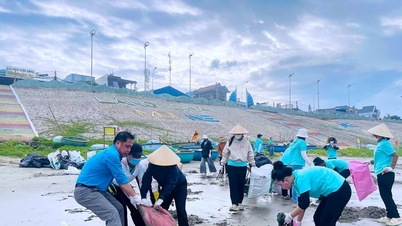



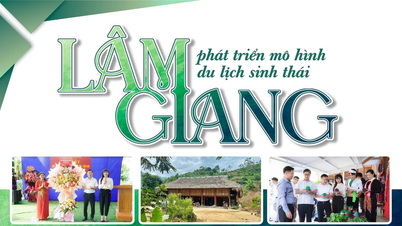

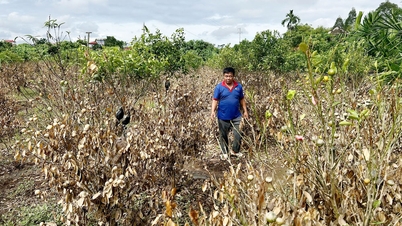

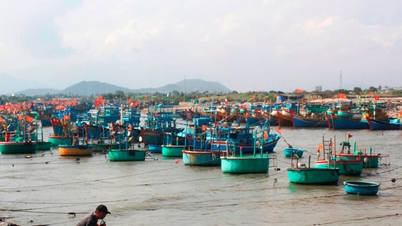
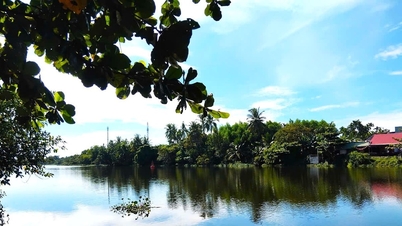
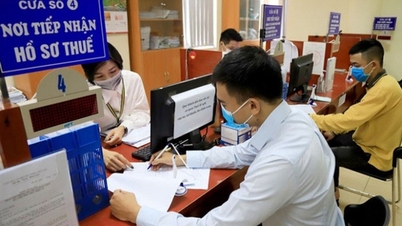


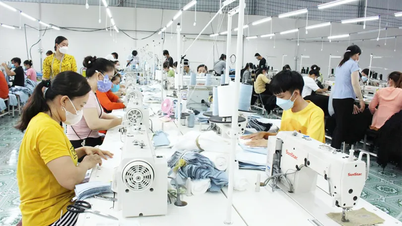



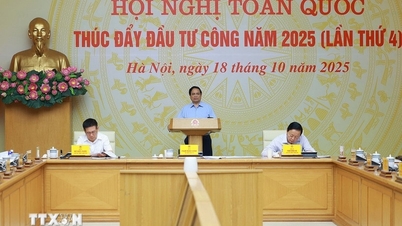

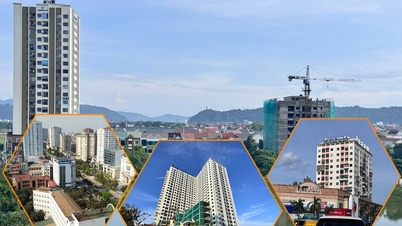





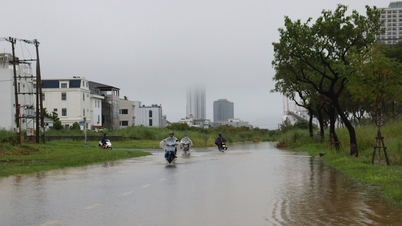
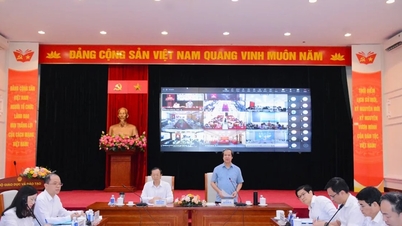
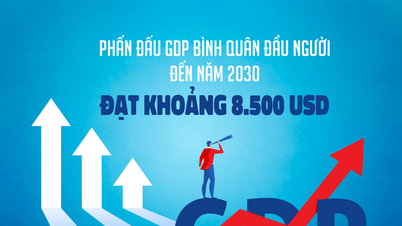
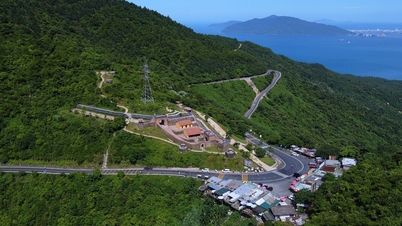
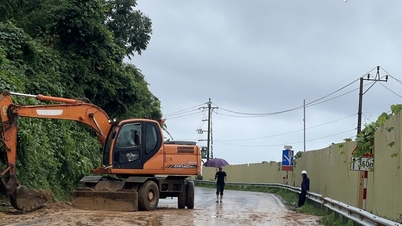

![[Photo] Nhan Dan Newspaper launches “Fatherland in the Heart: The Concert Film”](https://vphoto.vietnam.vn/thumb/1200x675/vietnam/resource/IMAGE/2025/10/16/1760622132545_thiet-ke-chua-co-ten-36-png.webp)







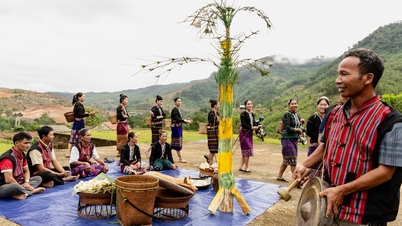





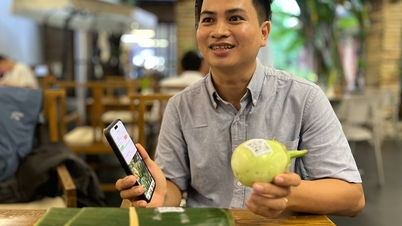




















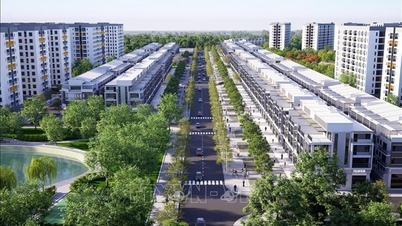
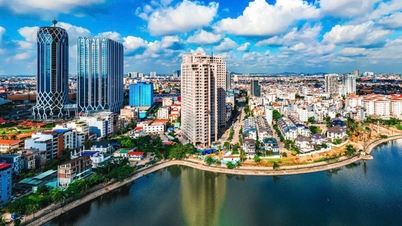


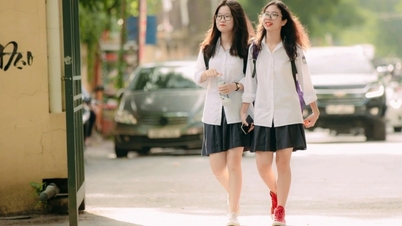
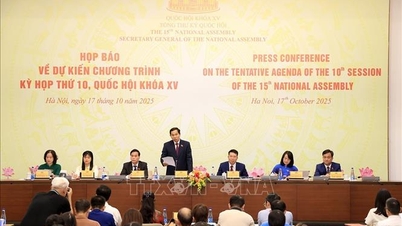









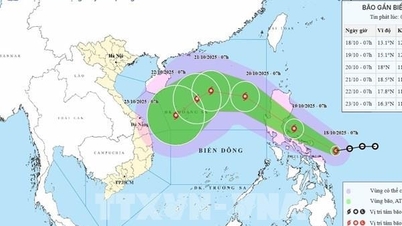

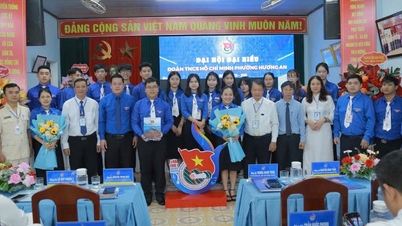

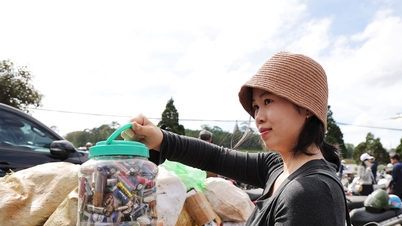
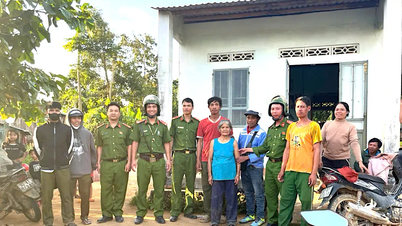

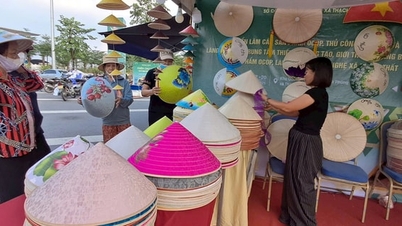












Comment (0)